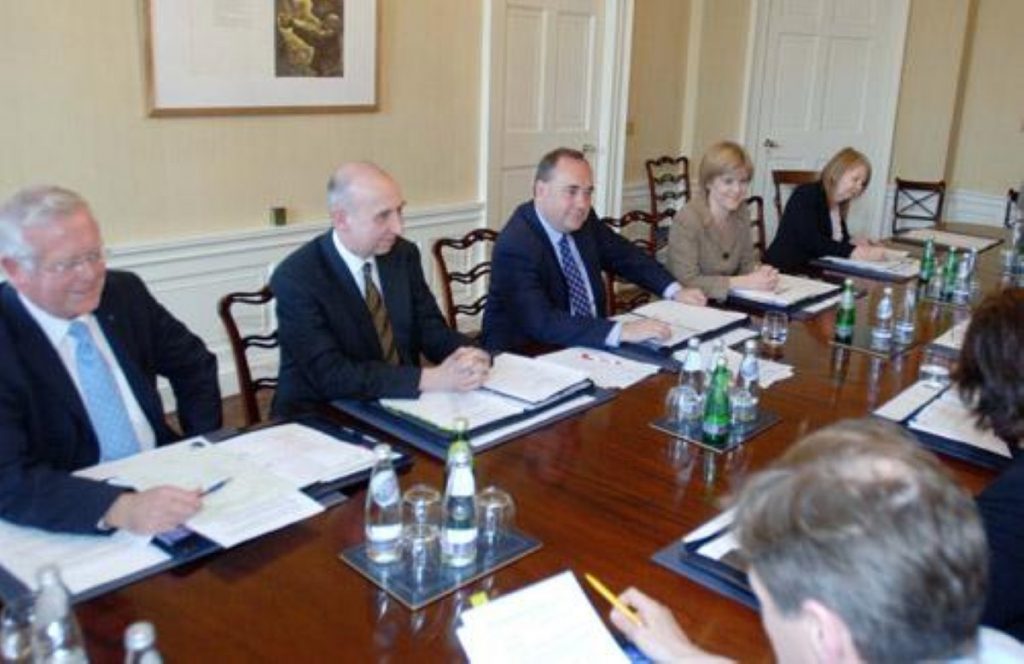State of play: Scottish elections
Personality politics and Westminster ‘hangover’ at stake in battle for Holyrood.
When the starting gun for the Scottish election campaign sounded five weeks ago, an unusually cautious Alex Salmond admitted his party had “everything to gain” as they sought a second-term in control of Holyrood.
Behind in the polls, the Scottish National party (SNP) looked set to come in second to a revitalised Labour, drawing upon dissatisfaction with the coalition government in Westminster.


But with two weeks left before the election, the SNP have surged ahead in the polls to take a double-digit lead over their prime competitor and at current predictions would increase their seats in the Scottish parliament by a considerable margin to 61 in total – while all the other parties, except the Greens, lose out.
Commentators largely credit this turn-around to the personality clash between Mr Salmond and the largely innocuous Labour leader Iain Gray.
Labour has tried to make the vote a referendum on the coalition government in Westminster, but the bombastic Mr Salmond is not easy to ignore.
The rotund and self-assured first minister contrasts sharply with the more reserved and stocky Mr Gray.
Voters appear to feel the difference as a YouGov poll for Scotland on Sunday showed 52% of voters believed Mr Salmond would make the best first minister, compared with only 27% for Mr Gray.
The SNP have also achieved a remarkable change of fortune in securing the backing of the Scottish edition of the Sun. The widely-read Murdoch tabloid used its front page in the 2007 election for a picture morphing the SNP’s logo into a hangman’s noose with the words: “Vote SNP today and you put Scotland’s head in a noose.”
Yet four years later it is now touting the qualities of Mr Salmond’s government. Whether for commercial reasons or through News International’s staunch support for the Tories in London, the paper is doing its best to keep Labour out.
Pro-SNP editorials adorn its pages while pictures of Mr Gray include caustic captions like: “This is what Labour’s leader looks like: we think.”
Mr Gray did not help voter confidence when he was filmed retreating into a Subway sandwich shop to avoid some aggressive anti-austerity protestors – in a scene reminiscent of satirical comedy ‘The Thick of It’.
But if Labour is falling behind on personalities, they still hope the electorate’s pre-occupation with the economy and public spending will see them turn towards the party once more.
There are elements of a ‘hangover’ election at stake, as anger with the coalition’s spending cuts spills over into Scotland. The main parties’ campaign promises reflect this need to offset Westminster’s budget cutbacks and send the Scottish economy on a different tact.
All the major parties have promised some kind of freeze on council tax, with the SNP proposing no increase for the entire of the next parliament as well as a commitment to a “renewable energy revolution” to create 130,000 jobs.
Labour has promised to create 250,000 jobs in four years and abolish youth unemployment, while the Greens are advocating a tax increase to counteract spending cuts.
Both the Lib Dems and Tories are more shackled to the coalition’s policies in Westmister, although Lib Dem leader Tavish Scott has done his best to distance himself.
Conservative leader Annabel Goldie is the only party leader to talk about any kind of tuition fees in Scotland and in a move to present herself as the ‘everyman’ candidate she promises to adopt a “common sense” approach to cutting spending.
The Tories and Lib Dems are unlikely to pick up any seats and the election will largely be a case of damage limitation, with the Lib Dems expected to take the biggest hit.
Prime minister David Cameron and Labour leader Ed Miliband have made campaign stops in Scotland in an effort to lend their credentials to their Scottish opposite numbers.
Yet, despite the poll numbers, Labour is not out for the count yet. With two weeks left, this race is likely to go down to the wire and there is plenty of scope for surprises.












